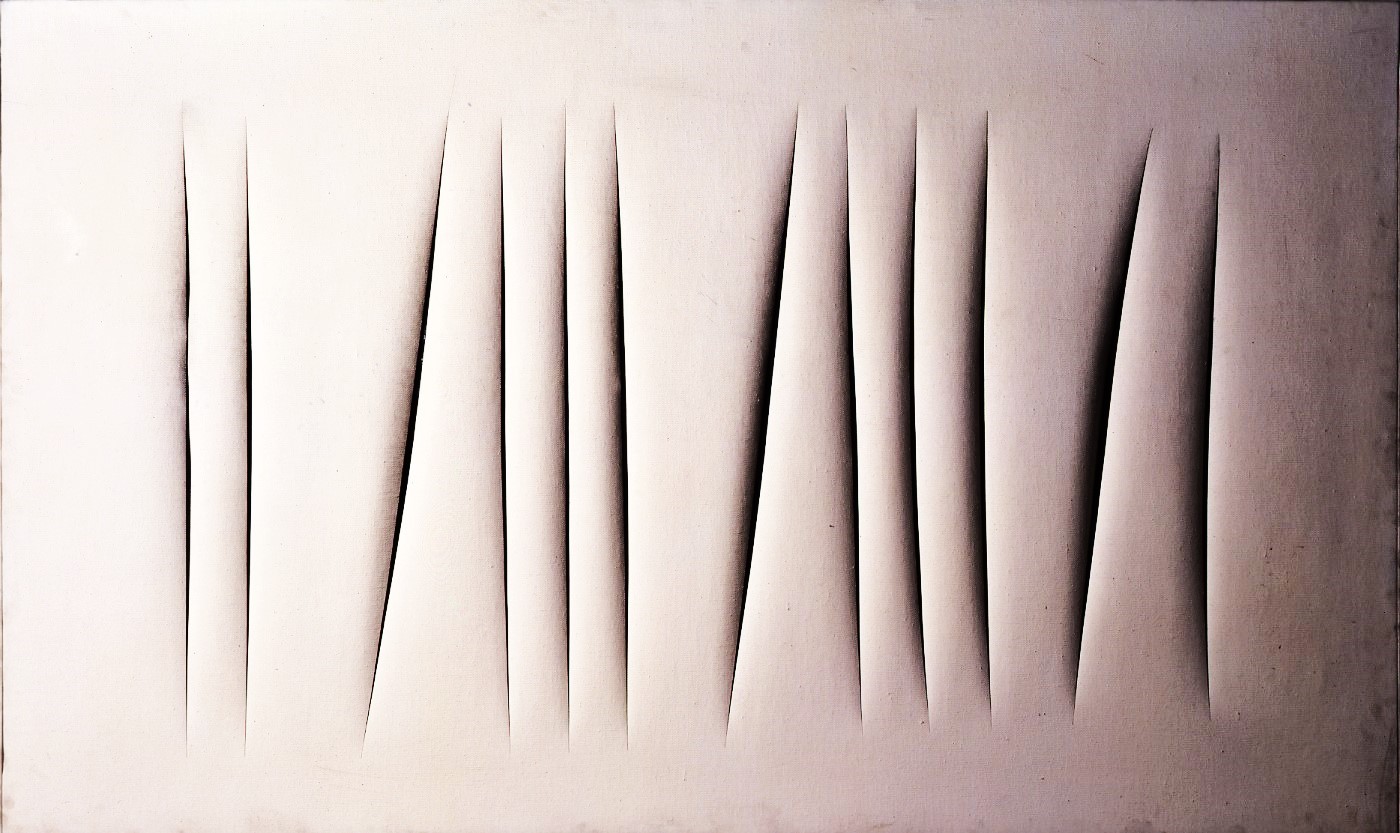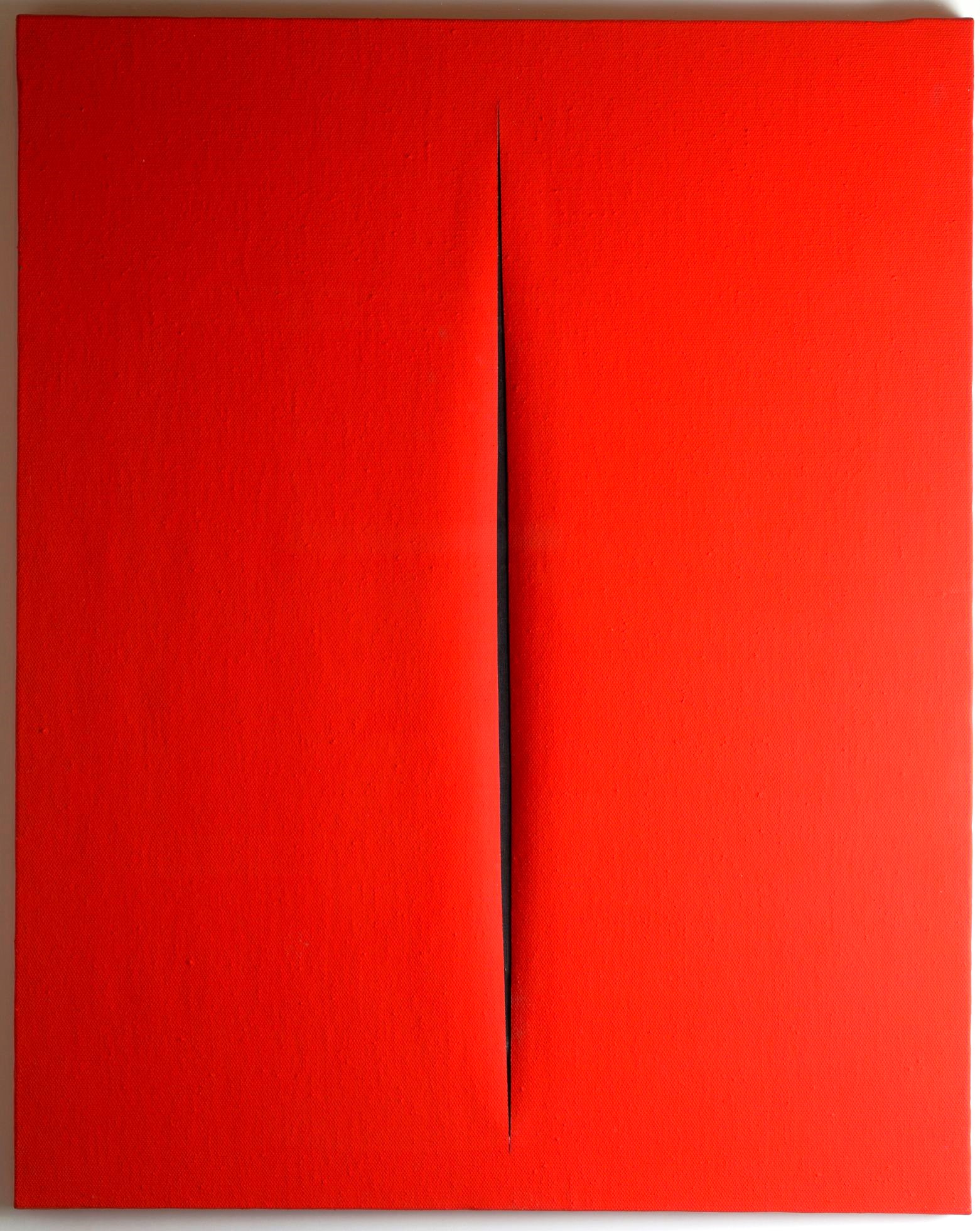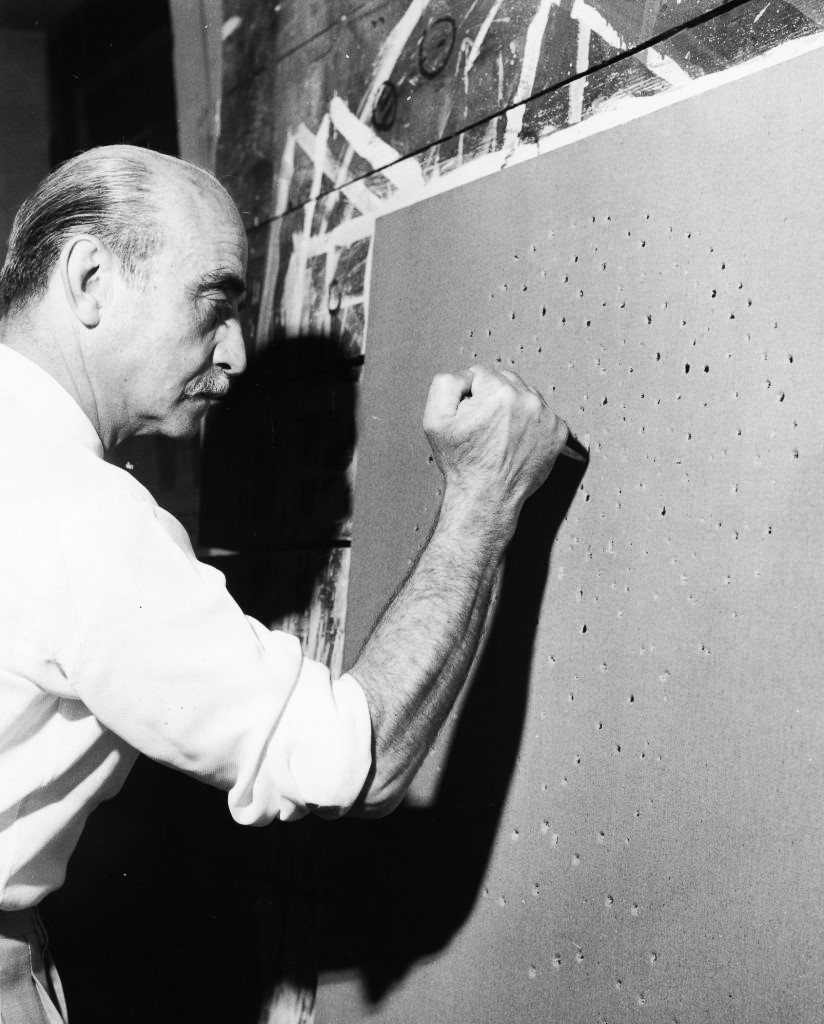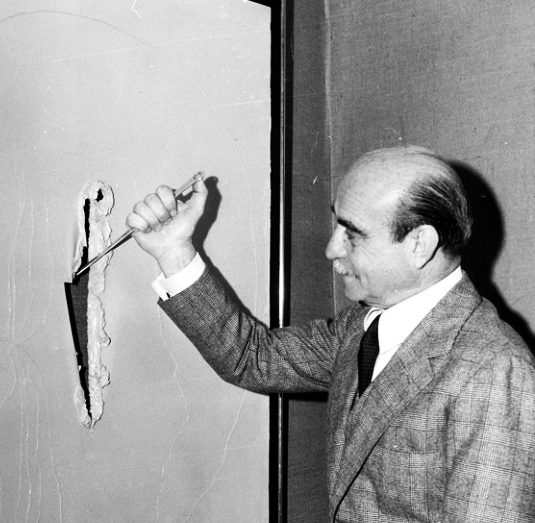



Lucio Fontana (Rosario, 19 de febrero de 1899-Comabbio, 7 de septiembre de 1968) fue un pintor, ceramista y escultor ítalo-argentino. Fundó en 1946 el Espacialismo.
Pasó los primeros años de su vida en Italia, se enrola en el Ejército Italiano, combate en la primera guerra mundial, es herido y le otorgan una medalla de plata al mérito. En 1921 regresó a Argentina, donde permaneció hasta 1928, trabajando como escultor junto a su padre hasta el momento en que abrió su propio Estudio.
En 1930 viajó a Italia presentó su primera exposición en Milán. En la siguiente década viajó varias veces entre Italia y Francia, trabajando con artistas de arte abstracto y también con expresionistas.
En 1940 retornó nuevamente a Buenos Aires, Argentina, lugar donde en 1946 fundó, junto con algunos de sus alumnos, la academia Altamira y dio a conocer el Manifiesto Blanco, en el cual sostiene “La materia, el color y el sonido en movimiento son los fenómenos cuyo desarrollo simultáneo integra el nuevo arte”.
Nuevamente en Milán, en 1947 apoyó junto a otros escritores y filósofos el primer manifiesto del espacialismo, retomando al mismo tiempo sus trabajos de cerámica en Albisola. En este nuevo concepto explora los límites espaciales de aquello que se ve y aquello que no, en cada una de sus obras.
A partir de 1958 inició la denominada serie de los tajos, consistente en agujeros o tajos sobre la tela de sus pinturas, los cuales dibujan el signo de lo que él mismo denomina “un arte para la Era Espacial”. Por esos años, en 1959, Fontana realizó presentaciones con telas recortadas con múltiples elementos combinables, denominando a estos conjuntos “Quanta”.
Murió el 7 de septiembre de 1968, en Italia.
Lucio Fontana (Rosario, February 19, 1899-Comabbio, September 7, 1968) was an Italian-Argentine painter, ceramist and sculptor. He founded Spatialism in 1946.
He spent the first years of his life in Italy, joined the Italian Army, fought in the First World War, was wounded and was awarded a silver medal for merit. In 1921 he returned to Argentina, where he remained until 1928, working as a sculptor with his father until he opened his own Studio.
In 1930 he traveled to Italy and presented his first exhibition in Milan. In the following decade he traveled several times between Italy and France, working with abstract art artists and also with expressionists.
In 1940 he returned again to Buenos Aires, Argentina, where in 1946 he founded, together with some of his students, the Altamira Academy and published the White Manifesto, in which he maintains “Matter, color and sound in movement are the phenomena whose simultaneous development integrates the new art”.
Again in Milan, in 1947, together with other writers and philosophers, he supported the first manifesto of spatialism, at the same time resuming his ceramic work in Albisola. In this new concept he explores the spatial limits of what is seen and what is not, in each of his works.
Starting in 1958, he began the so-called tajos series, consisting of holes or cuts on the canvas of his paintings, which draw the sign of what he himself calls “an art for the Space Age.” During those years, in 1959, Fontana made presentations with fabrics cut with multiple combinable elements, calling these sets “Quanta”.
He died on September 7, 1968, in Italy.
E-10 km 12
Sant Joan de Labritja
Ibiza 07810
Contacto
info@diegomontero.com
+598 95002 765
Costanera a la Barra s/n
El Tesoro
Maldonado 20001
